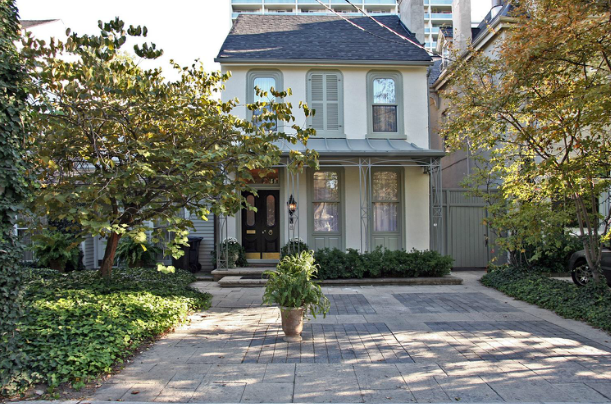Compared this: U.S. construction currently accounts for 5.8% of GDP, or less than half Canada’s level. And during their peak just before the great slump, it was just about 9%.
What does this tell us ?
Construction Might Loom a Little Too Large in Canada’s Economy
Anyone who’s tried to drive around downtown Toronto recently has probably thought there’s too much construction going on.
Road closures, condo and office projects that spill into the streets, luxury hotels sprouting up everywhere–it all seems a little excessive.
Recent economic data also suggest there might be too much construction activity going on in Canada, according to a report from BMO Capital Markets.
BMO found the share of the Canadian economy accounted for by construction activity–both residential and non-residential–is close to multi-decade highs at 13.4%, significantly above the 30-year average at 10.4%.
In the U.S., construction currently accounts for 5.8% of GDP, or less than half Canada’s level.
Even its recent high of 9.4% in 2006, just as the housing market in the U.S. peaked, construction’s share of the economy there was well below the current level in Canada.
Worry about construction’s share of the economy might seem misguided when the sector employs so many people–it currently accounts for 9.7% of all employment. But the reliance on one sector for growth–especially one that’s highly cyclical–can be problematic.
If the conditions that spawned the strength in that sector change, it can have a big impact on the economy as a whole.
“Any time you get to extremes on almost any measure of the economy, you have to start asking serious questions,” said Doug Porter, chief economist at BMO Capital Markets “Has something fundamental changed to justify this, or is it an accident waiting to happen?”
A key driver of Canada’s construction boom has been the ultra-low interest rate environment created by the Bank of Canada. Low borrowing costs fuel construction, both in the housing sector and in commercial real estate.
A period of exceptionally low interest rates “juices” construction more than other sectors, Mr. Porter said.
And interest rates can change in rapid and unpredictable ways.
BMO’s report says construction’s outsized share of the Canadian economy is an example of how Canada’s unbalanced monetary policy–low rates, high currency–is affecting the economy. In the 1990s, when the currency was too low and rates were too high, construction wallowed for a decade, it points out.
Read more @ http://blogs.wsj.com/
Never mind … Keep buy up is the way forward.
ANNEX – 33 Lowther Avenue – PRICE INCREASE
This “billionaire villa” is a 3 bedroom, 4 bathroom house in the Annex.
Here is the price history:
May 2008 $2,800,000
February 2009 $2,749,000
May 2009 $2,495,000
May 2010 $2,595,000
June 2010 $2,395,000
September 2011 $2,479,000
September 2011 $2,300,000 *SOLD*
May 2012 $4,200,000
October 2012 $3,999,000
February 2013 $3,738,000
April 2013 $3,195,000
June 26 $2,999,900
What is the price now ?
It’s UP by $400,100 to…
$3,400,000.
Nice.
